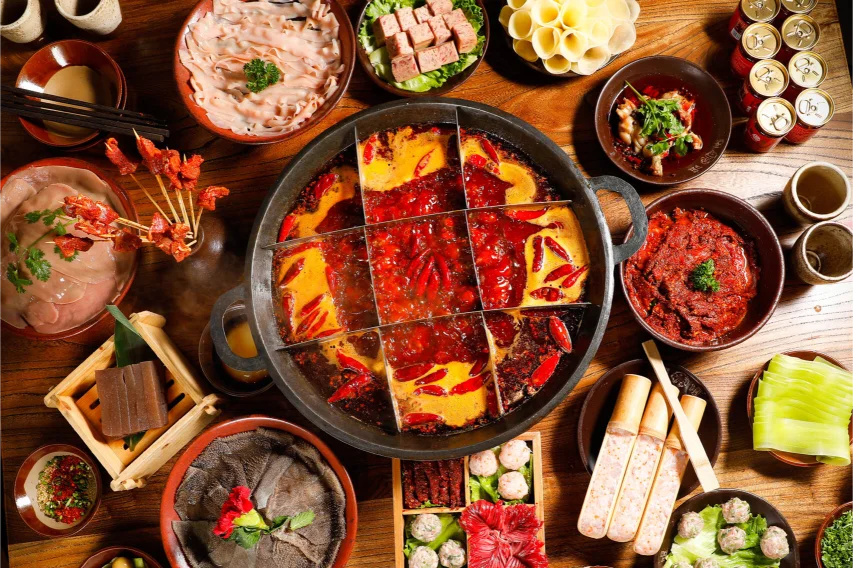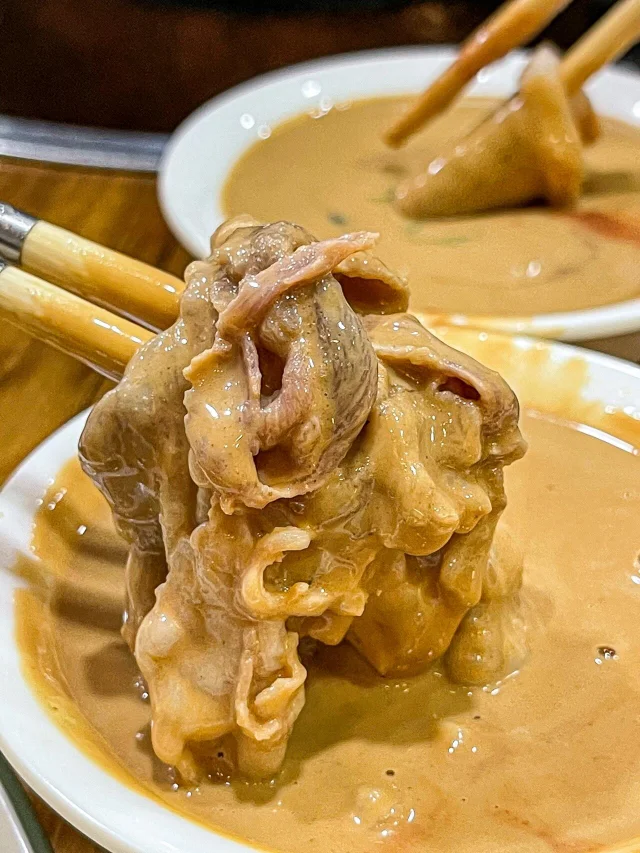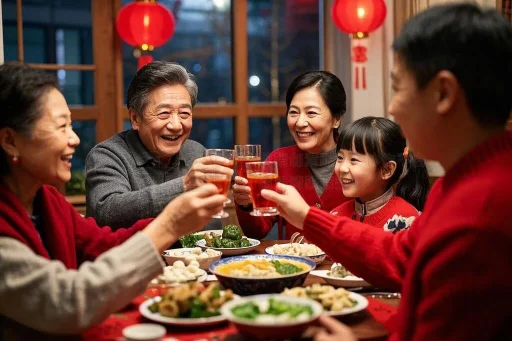Why do people in the Sichuan and Chongqing regions serve oil dipping sauce with their hotpots, while in the north of China, they usually have sesame paste? It’s not just a question that international visitors are curious about—even many Chinese people find it fascinating.
The Origins of Oil Dipping Sauce
Let’s start with the iconic Chongqing hotpot. Its key ingredient is beef tallow, which isn’t commonly used in everyday cooking. But, because it has a high melting point, reaching over 40°C, it is perfect for this spicy dish as it easily solidifies and adheres to the food. Once the soup starts boiling, the tallow doesn’t separate into oil and water, and when foods are dipped into it, the taste becomes rich and robust.

Chongqing Hotpot
The Sichuan Chengdu hotpot uses less beef tallow and more rapeseed oil, but whether it’s Chongqing or Chengdu, the flavor of the soup – whether salty, fragrant, or spicy – is quite strong. Therefore here, flavor enhancement isn’t the main goal when it comes to selecting a dipping sauce.
The primary function of the oil-based dipping sauce (油碟, yóu dié) is actually to cool the food down. When you take food out of a boiling pot, dipping it in oil rapidly lowers its temperature, making it easier to eat – as well as providing a smooth texture. If you let the food sit and cool naturally, the beef tallow will start to solidify, affecting the texture and taste.

Oil Dipping Sauce
Oil also adds fragrance. The debate between using oil or sesame paste is interesting because they both use sesame as the base ingredient. Despite the differences in hotpot styles and sauces, there’s a shared love for sesame’s aroma. The traditional oil dipping sauce is usually just sesame oil with a bit of garlic paste. The garlic in the oil sauce complements the soup’s spiciness, balancing the flavors and adding depth.
With each bite, the tallow and spices blend into the oil. This is perfect if you will be eating vegetables later in the meal, as by this time, the sauce will be flavorful, and the mix of meat essence will make the vegetables even tastier.
The Origins of Sesame Paste Dipping Sauce
When we talk about hotpots from the northern region, most people think of lamb. The pairing of lamb and sesame paste is probably the most famous combination.

Sesame Paste Dipping Sauce
The base for lamb hotpot is typically just water, sometimes with the addition of red dates, dried shrimp, or medicinal herbs, for visual appeal rather than taste. The main ingredient is lamb, fresh or frozen, paired with noodles, tofu, or vegetables like napa cabbage, which are all mild in flavor.
Even with the best ingredients, without seasoning, the dish will lack essential flavor.
This is where sesame paste (麻酱, má jiàng) comes in. Aside from its rich taste, the prevalence of sesame paste is influenced by regional agriculture and local preferences.


Sesame Paste Dipping Sauce
Sesame was introduced to China during the Han Dynasty, and by the Song Dynasty, sesame paste was being used in dishes like noodles. By the Qing Dynasty, sesame had become a major crop around the capital, with sesame paste becoming a popular addition to lamb hotpot; a tradition that persists to this day.
However, the paste used for dipping isn’t pure sesame as this can be slightly bitter. The most common version is a blend known as “two-eight sauce” (二八酱), which is two parts peanut butter to eight parts sesame paste.
To make a proper dipping sauce, the sesame paste must first be thinned out. You put it in a bowl and gradually stir in water until the oil is released, creating a smooth, creamy texture that sticks to the meat perfectly.
The most common liquid used to thin the paste is cooled boiled water, and some people add spice to this. Using oil would make the sauce too greasy.
Each family has its own unique recipe, but the basic ingredients for the sesame dip are two-eight sauce, chive flower paste, and fermented tofu, with optional additions like scallions, cilantro, and chili oil. Some people even add shrimp oil or fish sauce for extra flavor.
The way you dip the lamb into a northern hotpot is also different from the method used in Sichuan and Chongqing. In the north, you lightly dip the lamb into the sauce for a hint of flavor, whereas in a Sichuan hotpot, you fully submerge the food in the oil. If you overdo it with the northern dipping sauce, the sesame paste will overwhelm the taste of the lamb, making it sticky and masking the meat’s flavor.

Northern Lamb Hotpot / Beijing Lamb Hotpot
When the water starts boiling, you add the lamb slices, remove them as soon as they’re cooked, and then drag them through the sauce. The residual water on the lamb mixes with the sesame paste, thinning it out just enough so that the paste doesn’t feel too thick or sticky.
Since the meat is boiled in water, it lacks fat. Therefore, dipping it in the sesame paste adds an extra layer of rich, oily flavor. The water and juices from the meat blend, intensifying the savory taste while neutralizing any gaminess, and keeping the lamb tender and juicy.
So, whether you’re using oil or sesame paste depends on the type of hotpot you’re eating. It’s not a question of which is better, but rather which is more suitable. Oil to cool a hot, fat-based soup, and sesame paste to add flavor and texture to boiled meat.



